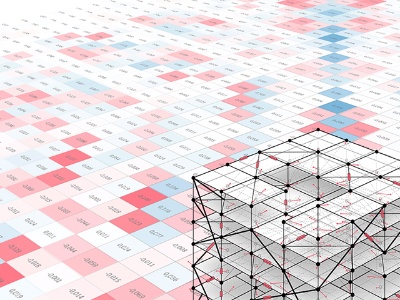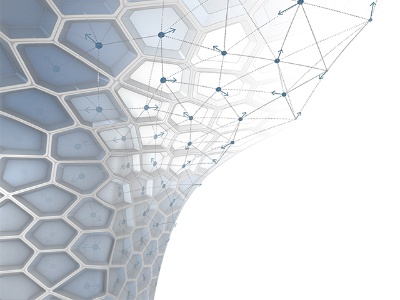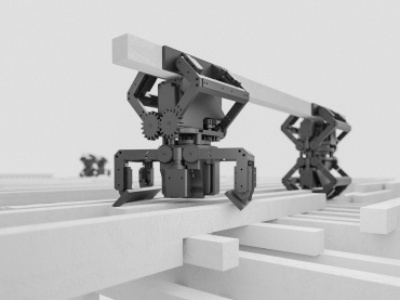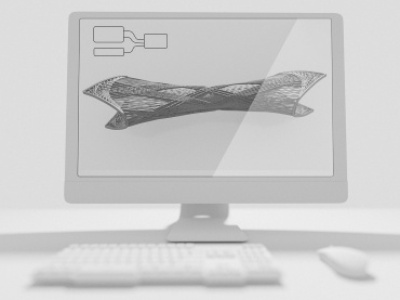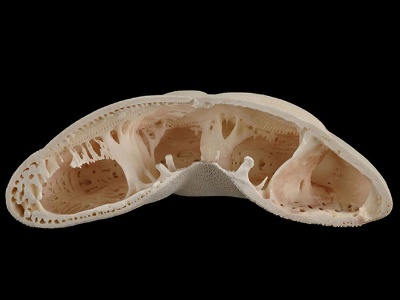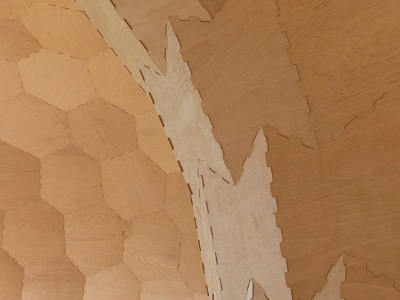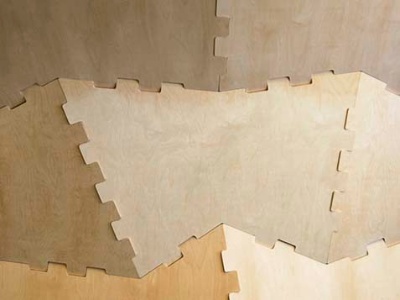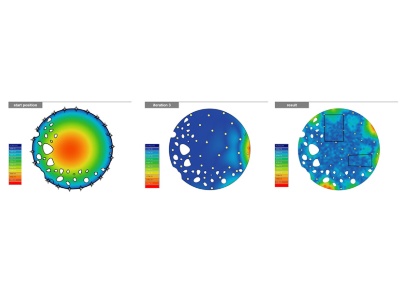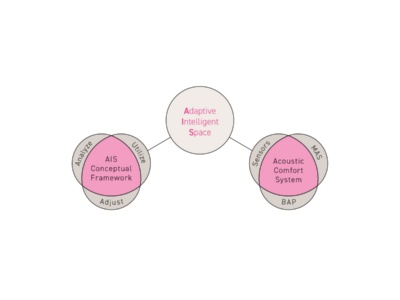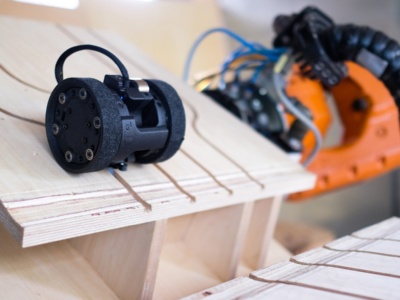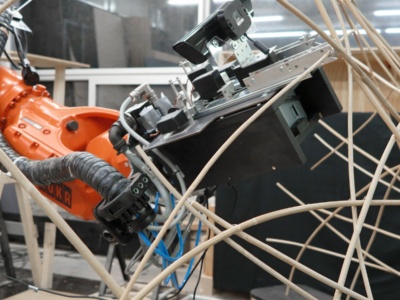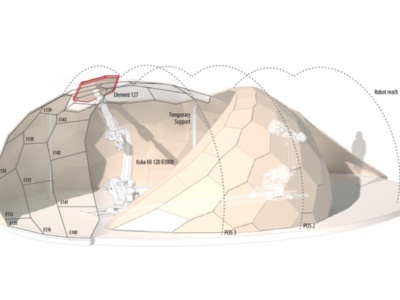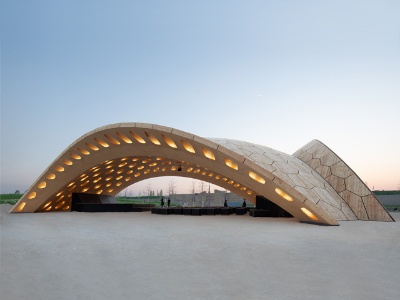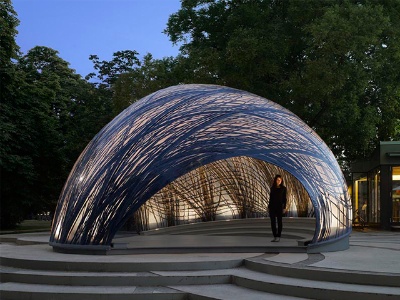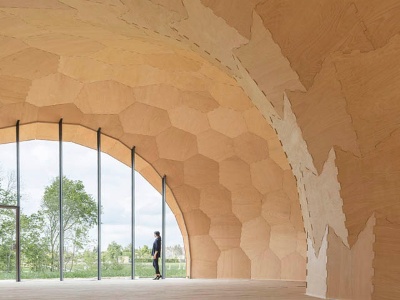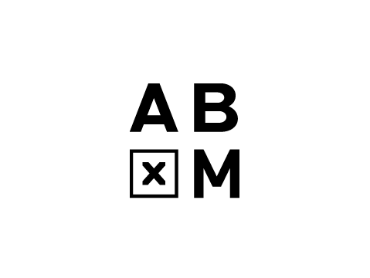Related Research Tools
Selected Publications
2024
- Leder, S., Kannenberg, F., Siriwardena, L., Schwinn, T., & Menges, A. (2024). Approaching the Augmentation of Heuristic Behaviors with Reinforcement Learning in Collective Robotic Construction. SIGraDi 2024 - Biodigital Intelligent Systems XXVIII International Conference of the Ibero-American Society for Digital Graphics, 1. https://sigradi.org/sigradi2024/
- Zhang, P., Sevim, S., Leder, S., Maierhofer, M., Schwinn, T., & Menges, A. (2024). Multi-Robotic Maypole Braiding. In O. Kontovourkis, M. C. Phocas, & G. Wurzer (Eds.), Data-Driven Intelligence - Proceedings of the 42nd Conference on Education and Research in Computer Aided Architectural Design in Europe (eCAADe 2024) (Vol. 1, pp. 137–146). eCAADe.
2023
- Schwinn, T., Siriwardena, L., & Menges, A. (2023). Integrative Agent-Based Architectural Design Modelling for Segmented Timber Shells. Advances in Architectural Geometry 2023, 177–192. https://doi.org/10.1515/9783111162683-014
- Schwinn, T., Groenewolt, A., Nguyen, L., Siriwardena, L., Alvarez, M., Reiner, A., Zorn, M. B., & Menges, A. (2023). ABxM.PlateStructures: Agent-based Architectural Design of Plate Structures [DaRUS]. https://doi.org/10.18419/darus-3438
- Kolbeck, L., Kovaleva, D., Manny, A., Stieler, D., Rettinger, M., Renz, R., Tošić, Z., Teschemacher, T., Stindt, J., Forman, P., Borrmann, A., Blandini, L., Stempniewski, L., Stark, A., Menges, A., Schlaich, M., Albers, A., Lordick, D., Bletzinger, K.-U., & Mark, P. (2023). Modularisation Strategies for Individualised Precast Construction - Conceptual Fundamentals and Research Directions. Designs, 7, Article 6. https://doi.org/10.3390/designs7060143
- Leder, S., & Menges, A. (2023). Introducing Agent-Based Modeling Methods for Designing Architectural Structures with Multiple Mobile Robotic Systems. In C. Gengnagel, O. Baverel, G. Betti, M. Popescu, M. R. Thomsen, & J. Wurm (Eds.), Towards Radical Regeneration (pp. 71–83). Springer International Publishing.
2022
- Stieler, D., Schwinn, T., Leder, S., Maierhofer, M., Kannenberg, F., & Menges, A. (2022). Agent-based modeling and simulation in architecture. Automation in Construction, 141, 104426. https://doi.org/10.1016/j.autcon.2022.104426
- Leder, S., Kim, H., Oguz, O. S., Kalousdian, N. K., Hartmann, V. N., Menges, A., Toussaint, M., & Sitti, M. (2022). Leveraging Building Material as Part of the In-Plane Robotic Kinematic System for Collective Construction. Advanced Science, 2201524. https://doi.org/10.1002/advs.202201524
- Stieler, D., Schwinn, T., & Menges, A. (2022). Volumetric intersections: Modularization approaches for freeform prefab concrete construction. Civil Engineering Design, 4, Article 1–3. https://doi.org/10.1002/cend.202100047
- Stieler, D., Schwinn, T., & Menges, A. (2022). Additive formwork in precast construction - Agent-based Methods for Fabrication-aware Modularization of Concrete Building Elements. In J. van Ameijde, N. Gardner, K. H. Hyun, L. Dan, & U. Sheth (Eds.), Post Carbon - Proceedings of the 27th International Conference on Computer-Aided Architectural Design Research in Asia. CAADRIA. https://caadria2022.org/wp-content/uploads/2022/04/435-1.pdf
- Forman, P., Stieler, D., Mark, P., & Menges, A. (2022). Adaptive Modulbauweisen mit Methoden der Fließfertigung. In V. T. Nguyen, M. Krüger, B. Freytag, & T. M. Laggner (Eds.), 5. Grazer Betonkolloquium (pp. 79–86). Verlag der TU Graz.
- Nguyen, L., Schwinn, T., Groenewolt, A., Maierhofer, M., Zorn, M. B., Stieler, D., Siriwardena, L., Kannenberg, F., & Menges, A. (2022). ABxM.Core: The Core Libraries of the ABxM Framework [DaRUS]. https://doi.org/10.18419/darus-2994
- Maierhofer, M., & Menges, A. (2022). Methods for Integrating Architectural Design Intent into the Agent-based Design of (Adaptive) Truss Structures. In M. Akbarzadeh, D. Aviv, H. J. Jamelle, & R. Stuart-Smith (Eds.), Hybrids and Haecceities: Proceedings of the 42nd Annual Conference of the Association for Computer Aided Design in Architecture (ACADIA) (pp. 318–325). ACADIA.
- Orozco, L., Krtschil, A., Skoury, L., Knippers, J., & Menges, A. (2022). Arrangement of reinforcement in variable density timber slab systems for multi-story construction. International Journal of Architectural Computing, 20, Article 4. https://doi.org/10.1177/14780771221135003
- Stieler, D., Schwinn, T., & Menges, A. (2022). Automatisierte Bauteilzerlegung für Betonfertigteile aus additiv hergestellten Schalungen. Beton- Und Stahlbetonbau, 117, Article 5. https://doi.org/10.1002/best.202200006
2021
- Orozco, L., Krtschil, A., Wagner, H. J., Bechert, S., Amtsberg, F., Skoury, L., Knippers, J., & Menges, A. (2021). Design Methods for Variable Density, Multi-Directional Composite Timber Slab Systems for Multi-Storey. In V. Stojakovic & B. Tepavcevic (Eds.), Proceedings of the 39th eCAADe Conference (Vol. 1, pp. 303–312). Cumincad. http://papers.cumincad.org/cgi-bin/works/paper/ecaade2021_284
- Schwinn, T. (2021). A systematic approach for developing agent-based architectural design models of segmented shells : towards autonomously learned goal-oriented agent behaviors. ICD Research Report, Article 5. http://dx.doi.org/10.18419/opus-11633
2020
- Wagner, H. J., Alvarez, M., Groenewolt, A., & Menges, A. (2020). Towards digital automation flexibility in large-scale timber construction: integrative robotic prefabrication and co-design of the BUGA Wood Pavilion. Construction Robotics, Article 120. https://doi.org/10.1007/s41693-020-00038-5
2019
- Maierhofer, M., & Menges, A. (2019). Towards integrative design processes and computational design tools for the design space exploration of adaptive architectural structures. ICETAD 2019 - Proceedings of the 1st International Conference on Emerging Technologies in Architectural Design, 113–120.
2018
- Groenewolt, A., Schwinn, T., Nguyen, L., & Menges, A. (2018). An interactive agent-based framework for materialization-informed architectural design. Swarm Intelligence, 12, Article 2. https://doi.org/10.1007/s11721-017-0151-8
2017
- Baharlou, E. (2017). Generative agent-based architectural design computation : behavioral strategies for integrating material, fabrication and construction characteristics in design processes. ICD Research Report, Article 1. http://dx.doi.org/10.18419/opus-9752
2016
- Brugnaro, G., Baharlou, E., Vasey, L., & Menges, A. (2016). Robotic Softness: An Adaptive Robotic Fabrication Process for Woven Structures. Posthuman Frontiers: Data, Designers, and Cognitive Machines, Proceedings of the 36th Conference of the Association for Computer Aided Design in Architecture (ACADIA), 154–163.
2015
- Schwinn, T., & Menges, A. (2015). Fabrication Agency – Landesgartenschau Exhibition Hall. Architectural Design, 85, Article 5. https://doi.org/10.1002/ad.1960
- Krieg, O. D., Schwinn, T., Menges, A., Li, J.-M., Knippers, J., Schmitt, A., & Schwieger, V. (2015). Biomimetic lightweight timber plate shells : computational integration of robotic fabrication, architectural geometry and structural design. Advances in architectural geometry 2014, 109–125. https://doi.org/10.1007/978-3-319-11418-7_8
- Vasey, L., Baharlou, E., Dörstelmann, M., Koslowski, V., Prado, M., Schieber, G., Menges, A., & Knippers, J. (2015). Behavioral Design and Adaptive Robotic Fabrication of a Fiber Composite Compression Shell With Pneumatic Formwork. Computational Ecologies: Design in the Anthropocene, Proceedings of the 35th Annual Conference of the Association for Computer Aided Design in Architecture (ACADIA), 297–309.
- Baharlou, E., & Menges, A. (2015). Toward a behavioral design system : an agent-based approach for polygonal surfaces structures. Computational Ecologies: Design in the Anthropocene, Proceedings of the 35th Annual Conference of the Association for Computer Aided Design in Architecture (ACADIA), 161–172.
2014
- Schwinn, T., Krieg, O., & Menges, A. (2014). Behavioral Strategies: Synthesizing Design Computation and Robotic Fabrication of Lightweight Timber Plate Structures. Design Agency - Proceedings of the 34th Annual Conference of the Association for Computer Aided Design in Architecture (ACADIA), 177–188.
2013
- Baharlou, E., & Menges, A. (2013). Generative agent-based design computation: Integrating material formation and construction constraints. Computation and Performance – Proceedings of the 31th eCAADe Conference, 2, 165–174.
- Parascho, S., Baur, M., Baharlou, E., Knippers, J., & Menges, A. (2013). Agent Based Model for the Development of Integrative Design Tools. Proceedings of the 33nd Annual Conference of the Association for Computer Aided Design in Architecture (ACADIA) – Adaptive Architecture, 429–430.
- Baharlou, E., & Menges, A. (2013). Behavioural prototyping: an approach to agent-based computational design driven by fabrication characteristics and material constraints. Rethinking Prototyping - Proceedings of the Design Modelling Symposium Berlin 2013, 291–303.
Contact Information

Tobias Schwinn
Dr.-Ing.Head of Research and Research Infrastructure



